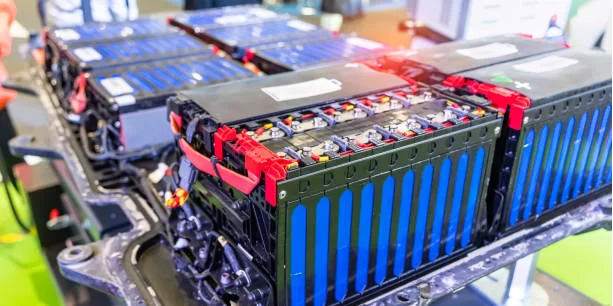Exploring the Design of Innovative Lithium Battery Storage Containers
In today’s rapidly advancing technological world, lithium batteries have become an efficient and convenient energy storage solution widely used in various fields of our lives, from smartphones and electric vehicles to renewable energy storage systems. However, with the continuous improvement in lithium battery performance and the increasing diversity of application scenarios, higher requirements are being placed on the design of their storage containers. Innovative designs for lithium battery storage containers not only affect the safety, performance, and lifespan of the batteries but also play a significant role in the development of the entire energy ecosystem.

Traditional lithium battery storage containers often simply provide a physical shell to protect the batteries from external environmental factors. However, this design is increasingly showing its limitations when faced with more complex usage conditions and higher performance demands. For example, in high-temperature environments, traditional containers may fail to dissipate heat effectively, leading to excessive battery temperatures that impact performance and pose safety risks. Similarly, they might not offer sufficient cushioning against impacts or vibrations, potentially damaging the internal structure of the batteries.
To overcome these challenges, researchers are actively exploring novel and unique design concepts. One innovative approach is the use of smart materials in constructing storage containers. Smart materials can automatically adjust their properties based on environmental conditions. For instance, shape memory alloys change shape when the temperature rises, increasing the area of heat dissipation channels for efficient cooling. Applying such materials to the outer shell of lithium battery containers can automatically regulate the heat dissipation effect according to the battery temperature, maintaining the battery within its optimal operating temperature range.
Another promising direction is the multi-layer composite structure design. By combining materials with different properties into a multi-layer structure, the storage container can simultaneously possess multiple functions. For example, the outer layer can be made of high-strength, wear-resistant materials to resist external impacts and abrasion. The middle layer can use insulating materials to reduce heat transfer, while the inner layer can employ materials with good conductivity and chemical stability to provide excellent electrical connections and chemical protection when in direct contact with the battery.
In terms of structural design, some innovative ideas are also emerging. For instance, using honeycomb or biomimetic structures to increase the strength and impact resistance of the container. Honeycomb structures have an extremely high strength-to-weight ratio, providing excellent compressive performance while reducing weight. Biomimetic structures, inspired by biological features such as the hollow structure of bones, ensure strength while achieving lightweight designs.
Additionally, integrated design is a current research hotspot. Integrating components of the Battery Management System (BMS) directly into the storage container can reduce wiring and connection complexity, enhancing the system’s reliability and stability. Meanwhile, designing reasonable airflow and fluid channels inside the container can achieve more uniform temperature distribution, further improving battery performance.
Besides innovations in materials and structure, extending functionality is also a crucial direction in the design of new lithium battery containers. Some designs consider quick battery replacement features, allowing for rapid battery swaps when needed, thereby improving equipment efficiency. Other designs integrate wireless charging technology, enabling convenient charging while the battery is stored.
In practical applications, designing innovative lithium battery storage containers must also consider factors such as cost, manufacturing processes, and recyclability. Although some advanced design concepts perform excellently in terms of performance, high costs or manufacturing difficulties can hinder large-scale application. Therefore, researchers need to find a balance between innovation and practicality.
For example, a new foldable lithium battery storage container is under development. Made from flexible materials, this container can be folded and unfolded as needed, significantly saving space, especially suitable for portable devices and space-limited applications. However, to commercialize this design, issues related to the durability, sealing, and cost of flexible materials need to be addressed.
Additionally, some research teams are exploring the use of 3D printing technology to manufacture lithium battery storage containers. 3D printing allows for precise manufacturing of complex structures, providing more possibilities for innovative designs. However, the speed and cost of 3D printing currently limit its widespread application.
In conclusion, the design of innovative lithium battery storage containers is a field full of challenges and opportunities. By continuously exploring new materials, structures, and functionalities, we can break free from the constraints of traditional designs, providing stronger support for the development of lithium batteries. This will not only promote further application of lithium batteries in existing fields but also potentially open up entirely new application scenarios, creating more possibilities for the future of human energy. In future developments, we look forward to seeing more innovative lithium battery storage containers move from the laboratory to the market, bringing more convenience and safety to our lives.
